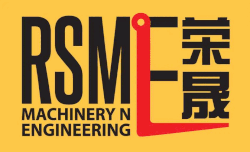Electric Forklifts: Lead-Acid vs. Lithium-Ion Forklifts: Which Battery Type is Right for Your Operations?
- Ruqian Sim
- Nov 7, 2024
- 2 min read
Updated: Dec 18, 2024
Choosing the right forklift battery is crucial for productivity and efficiency. Two of the most common battery types in forklifts are lead-acid and lithium-ion. In this post, we’ll explore the key differences between lead-acid and lithium-ion forklift batteries and help you decide which is best for your operational needs.

1. What Are Lead-Acid and Lithium-Ion Forklift Batteries?
Lead-Acid Forklifts: Powered by traditional lead-acid batteries, which are more affordable upfront but come with limitations.
Lithium-Ion Forklifts: These forklifts use advanced lithium-ion batteries, offering higher efficiency and better performance for modern operations.
2. Charging Times and Convenience
Lead-Acid Batteries: Lead-acid batteries require 8 hours to charge fully and an additional 8 hours to cool. This downtime can reduce operational flexibility.
Lithium-Ion Batteries: Lithium-ion batteries, in contrast, have a fast charging time, often reaching a full charge in just 1 to 2 hours. Opportunity charging allows these batteries to be topped off during breaks, enabling continuous use without major downtime. Plug and Play.
3. Energy Efficiency
Lead-Acid Forklifts: These batteries lose a significant amount of energy to heat during charging, typically resulting in only 60-70% energy efficiency.
Lithium-Ion Forklifts: Lithium-ion batteries are around 90% energy efficient, converting more power into usable energy and reducing electricity costs over time.
4. Maintenance Requirements
Lead-Acid Batteries: Lead-acid batteries require regular maintenance, such as watering, equalizing charges, and cleaning terminals to prevent acid buildup.
Lithium-Ion Batteries: Lithium-ion batteries are maintenance-free, eliminating time and labor associated with routine battery upkeep. This can lead to significant long-term savings.
5. Battery Lifespan
Lead-Acid Batteries: Lead-acid batteries typically last between 1,000 to 1,500 cycles, depending on usage and maintenance, generally requiring replacement within 3-5 years.
Lithium-Ion Batteries: Lithium-ion batteries offer longer lifespans, with an average of 4000 cycles, often lasting 5-10 years with minimal performance degradation.
6. Environmental Impact
Lead-Acid Batteries: Contain toxic materials and require specific recycling processes. They have a larger environmental footprint due to frequent replacements.
Lithium-Ion Batteries: Although still requiring recycling, lithium-ion batteries have a lower environmental impact, lasting longer and reducing waste from frequent replacements.
7. Cost Comparison
Initial Investment: Lead-acid batteries are more affordable upfront but may lead to higher long-term costs due to maintenance, energy inefficiency, and frequent replacements.
Long-Term Savings: Lithium-ion batteries have a higher initial cost but offer substantial savings over time through reduced maintenance, energy efficiency, and longer lifespan.
8. Which Forklift Battery Is Right for Your Business?
Choose Lead-Acid if: You have a smaller operation, lower initial budget, and can manage maintenance and charging schedules.
Choose Lithium-Ion if: You need high efficiency, lower maintenance, and operational flexibility with quick and opportunity charging options.
ConclusionWhile both lead-acid and lithium-ion batteries have their pros and cons, lithium-ion batteries often prove to be the more efficient and cost-effective option in the long run. By assessing your operational needs, budget, and sustainability goals, you can make an informed decision on the best forklift battery for your business.




Comments